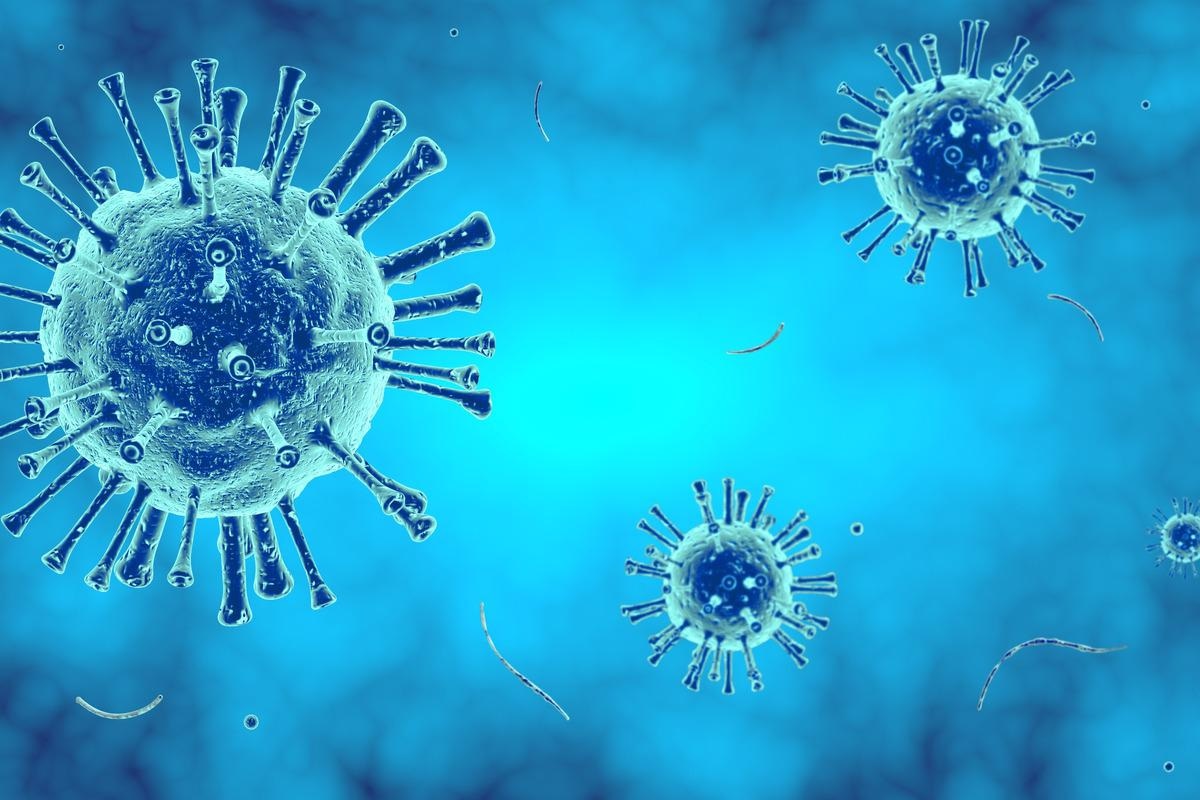A recent study posted to the Research Square* pre-print server, and currently under consideration at BMC Genomic Data, investigated the similarities between severe acute respiratory syndrome coronavirus 2 (SARS-CoV-2) and human retroelements (RE).
 Study: SARS-CoV-2 and human retroelements: a case for molecular mimicry? Image Credit: ThSucho/Shutterstock
Study: SARS-CoV-2 and human retroelements: a case for molecular mimicry? Image Credit: ThSucho/Shutterstock

 This news article was a review of a preliminary scientific report that had not undergone peer-review at the time of publication. Since its initial publication, the scientific report has now been peer reviewed and accepted for publication in a Scientific Journal. Links to the preliminary and peer-reviewed reports are available in the Sources section at the bottom of this article. View Sources
This news article was a review of a preliminary scientific report that had not undergone peer-review at the time of publication. Since its initial publication, the scientific report has now been peer reviewed and accepted for publication in a Scientific Journal. Links to the preliminary and peer-reviewed reports are available in the Sources section at the bottom of this article. View Sources
Various studies regarding the viral characteristics and symptom manifestations of SARS-CoV-2 have been conducted to date and many more are ongoing. Several reports have noted that autoimmunity and RE deregulation play an instrumental role in determining the outcome of coronavirus disease 2019 (COVID-19) cases.
About the study
The present study assessed the relationship of human RE to coronaviruses (CoV) based on the transcriptome, genome, peptide array, and epitope-related data of RE and infected CoV.
Genomic sequences from SARS-CoV-1, SARS-CoV-2, Middle East respiratory syndrome CoV (MERS-CoV), human pathogenic CoVs, and bat CoVs were collected and aligned. A comparison of these sequences was performed on a genomic scale.
Data related to SARS-CoV-2 epitope-specific antibody with respect to immunoglobulin G (IgG) levels in patients who were severely and mildly affected by SARS-CoV-2 infection were collected. Moreover, data on SARS-CoV-2 ribonucleic acid (RNA)-dependent RNA polymerase (RdRp), helicase, 2'-O-ribose methyltransferase, and SARS-CoV-2-spike protein was also obtained. Also, total RNA sequencing data was acquired from SARS-CoV-2-infected macrophages.
Results
The study results showed that CoV genomes had several sequences identical to human RE with many of these sequences being epitopes shared by RE and SARS-CoV-2. Antibodies related to some of these shared epitopes corresponded to COVID-19 severity. Furthermore, the study found that RE was extensively expressed in healthy controls while significant deregulation was observed in COVID-19 patients and human cells infected with SARS-CoV-2.
Sequence identity was formed by sequence alignment of the RE and CoV genomes. This sequence identity was made of 12 to 35 base pairs (bp) of both human RE sequences and various CoV genomes researched in this study. In particular, a higher number of sequences identical to RE were found in CoV in sequences having 12 or more, 15 or more, and 18 or more bp.
Downstream analysis of 18 bp sequences showed that human CoV HKU1 (HCoV-HKU1) had the highest number of RE-identical sequences, followed by HCoV-NL63 and SARS-CoV-2. The inclusion of single nucleotide polymorphisms showed that SARS-CoV-2 aligned to up to 35 bp in RE sequences. Overall, a majority of short RE-identical sequences were found in CoV genomes including SARS-CoV-2.
In the comparison of the coding regions of the SARS-CoV-2 genomes with RE-identical sequences having 18 bp, a total of 70 sequences with identical amino acids (aa) in RE and CoV were found. The investigation of peptide arrays showed an overlap of SARS-CoV-2 epitopes to human LINE1 proteins from RdRp, 2'-Oribose methyltransferase, and helicase. This overlap was found in epitopes having more than two-fold elevation in antibody levels in severe COVID-19 cases. Antibodies targeting SARS-CoV-2 RdRp polymerase epitope were 39-fold higher in severe COVID-19 cases as compared to mild cases. Altogether, some peptide sequences shared by RE and SARS-CoV-2 genomes have epitopes corresponding to COVID-19 severity.
Analysis of RE of COVID-19 patient data related to bronchoalveolar lavage fluid (BALF), and lung epithelial cells and macrophages infected with SARS-CoV-2 explored the presence of RE expression and its alterations post COVID-19 infection. Highly significant and effective deregulation of human RE was observed in all test samples. An upregulation by 2035 RE and downregulation by 3144 RE was found in the comparison of BALF of COVID-19 patients and healthy controls while the most deregulated RE was LINE1.
In epithelial lung cells infected with SARS-CoV-2, 34 RE were found to be upregulated and 29 RE were downregulated. For human macrophages infected with COVID-19, 8 and 24 RE were up- and downregulated, respectively. Both of these had LINE1 as the most de-regulated RE.
Conclusion
The study findings showed that CoV genomes, including that of SARS-CoV-2, have several sequences identical to human RE. Furthermore, these identical sequences are a component of SARS-CoV-2 epitopes related to disease severity in COVID-19.
Overall, the study findings indicated that human RE targeted by autoantibodies could play a part in diseases caused by CoV, like COVID-19.

 This news article was a review of a preliminary scientific report that had not undergone peer-review at the time of publication. Since its initial publication, the scientific report has now been peer reviewed and accepted for publication in a Scientific Journal. Links to the preliminary and peer-reviewed reports are available in the Sources section at the bottom of this article. View Sources
This news article was a review of a preliminary scientific report that had not undergone peer-review at the time of publication. Since its initial publication, the scientific report has now been peer reviewed and accepted for publication in a Scientific Journal. Links to the preliminary and peer-reviewed reports are available in the Sources section at the bottom of this article. View Sources
Article Revisions
- May 12 2023 - The preprint preliminary research paper that this article was based upon was accepted for publication in a peer-reviewed Scientific Journal. This article was edited accordingly to include a link to the final peer-reviewed paper, now shown in the sources section.